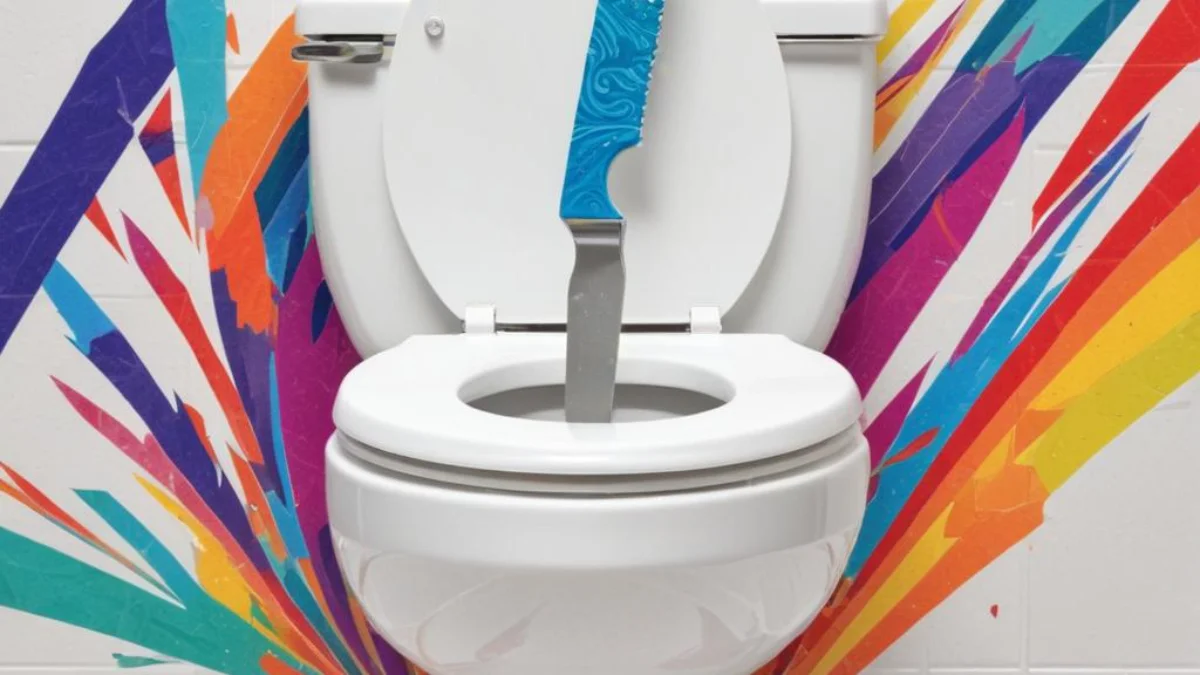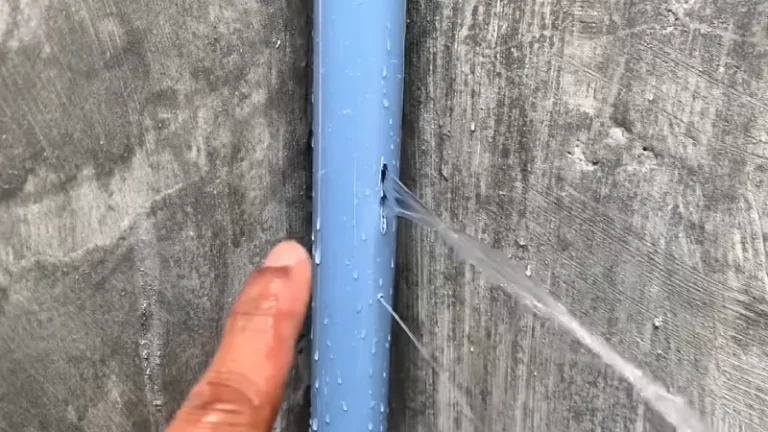How to Cut Toilet Shims: The Pro Guide to a Rock-Solid Throne
There’s nothing more unsettling than a toilet that wobbles every time you sit down. It feels unstable, cheap, and can lead to serious problems like a broken wax seal and water leaks. This common household annoyance is almost always caused by an uneven floor, a problem that a few simple pieces of plastic—toilet shims—are designed to solve. The real challenge, however, isn’t placing the shims; it’s cutting them for a clean, invisible finish.
Many homeowners find themselves with a stable toilet but with ugly, jagged pieces of plastic sticking out from the base. Cutting them flush against the curved porcelain without scratching the toilet or the floor can be frustratingly difficult. This guide provides a comprehensive, step-by-step solution to mastering the art of cutting toilet shims, ensuring your toilet is not only stable but also looks professionally installed.
You'll Learn About
Why Your Toilet Wobbles: The Root of the Problem
Before fixing the symptom, it’s essential to understand the cause. A rocking toilet isn’t just an annoyance; it’s a sign that the base of the toilet isn’t making even contact with the floor. This constant movement can compromise the wax ring that seals the toilet to the drainpipe, leading to leaks, water damage, and unpleasant sewer gas odors.
The primary culprit is almost always an uneven floor. Tile installations can have slight high and low spots, or the subfloor itself might not be perfectly level. The toilet’s porcelain base itself can also have minor imperfections. Stabilizing the toilet with shims is the critical first step to prevent these long-term issues. Ignoring a wobbly toilet is a gamble that can lead to much more expensive repairs down the road, much like how a small roof leak can eventually require you to replace attic ladder hinge arms due to widespread water damage.
Choosing the Right Shims: Soft vs. Hard Plastic
Not all toilet shims are created equal. You’ll generally find two types at the hardware store: hard, brittle plastic shims and softer, more flexible composite or rubber shims. Your choice will significantly impact how easy they are to cut.
Hard plastic shims are very rigid and provide excellent support, but they are notoriously difficult to cut cleanly. They often snap unexpectedly or leave a jagged edge. Soft composite shims are the preferred choice for both DIYers and many professionals because they are much easier to trim with a simple utility knife, offering a clean cut with less effort. If you have the option, always choose the softer, more pliable shims for a hassle-free installation.
Step-by-Step Guide: Placing and Securing Your Shims
First, you need to properly place the shims to eliminate the wobble. Gently rock the toilet to identify where the gaps are between the toilet base and the floor. You may need a helper for this step.
Slide the shims into the gaps one at a time. Push them in firmly with your fingers until they are snug. Don’t force them in so hard that you lift the toilet, as this can create new gaps elsewhere. The goal is to fill the existing space and stop all movement. Check for stability by trying to rock the toilet again. Once it’s completely stable, you’re ready to cut.
The Best Methods for Cutting Toilet Shims Revealed
Here we break down the most effective techniques for cutting toilet shims, from the most common method to pro-level tricks for a flawless finish. The key to a hidden, professional-looking repair is a flush cut that follows the contour of the toilet base.
Method 1: The Classic Score-and-Snap (The Standard Approach)
This is the most widely recommended method, especially for hard plastic shims. It relies on scoring the plastic deeply so it breaks off cleanly along the line you’ve created. A sharp blade is non-negotiable for this technique.
Start by pressing the blade of a sharp utility knife against the toilet’s base, angling it slightly inward and downward. This angle is crucial because it ensures the final cut will be slightly underneath the toilet’s edge, making it invisible. Score the shim repeatedly, applying firm pressure. It may take 5-10 passes to create a deep enough groove.
Once scored, you can snap off the excess plastic. The easiest way is to use a pair of pliers to grip the protruding end of the shim and bend it upward. It should snap cleanly along the score line. If it doesn’t, you haven’t scored it deeply enough.

Method 2: The Soft Shim Direct Cut (The Easiest Method)
If you used soft composite or rubber shims, your job is much easier. These materials can typically be cut straight through with a sharp utility knife without the need for scoring. The same principle of angling the blade applies.
Press the blade firmly against the toilet base, angled slightly inward. Carefully slice through the shim in one or two passes. For extra protection against scratching your floor, you can slide a thin putty knife underneath the shim before cutting. This simple trick can prevent costly flooring damage, a lesson learned by anyone who has dealt with unexpected home repairs like figuring out why a router is not working after a thunderstorm.
Method 3: The Oscillating Multi-Tool (The Power Tool Pro)
For those with an oscillating multi-tool, this is often the fastest and cleanest way to get a perfectly flush cut. The high-speed vibrations of the blade can slice through even the hardest plastic shims with precision. However, this method requires a steady hand.
Choose a fine-tooth blade designed for cutting plastic. Rest the blade flat against the toilet base, ensuring it’s flush with the porcelain. Turn the tool on and gently guide it through the shim. Do not force the tool; let the blade do the work. The primary risk here is scratching the toilet or floor, so extreme care is necessary.
Method 4: The Heated Blade (The Clever Hack)
A less common but highly effective trick involves using heat to melt through the plastic. This can be done with a hot knife or, carefully, with a soldering iron. The heat provides a smooth, clean cut with minimal effort and no risk of cracking the shim.
If using a soldering iron, simply let it heat up and then gently press the tip against the shim where you want to cut, using the toilet base as your guide. The plastic will melt away, leaving a perfectly flush edge. Ensure your workspace is well-ventilated, as melting plastic can release fumes. This method requires patience; let the heat do the work and avoid pushing too hard, which could damage the toilet or flooring.
| Cutting Method | Best For | Pros | Cons |
|---|---|---|---|
| Score-and-Snap | Hard Plastic Shims | Requires only a basic utility knife. | Can be difficult; may result in a jagged break if not scored deeply. |
| Direct Cut | Soft/Rubber Shims | Fast, easy, and provides a clean cut. | Not effective on hard plastic shims. |
| Oscillating Multi-Tool | All Shim Types | Very fast with a perfectly flush, clean finish. | Requires a steady hand; risk of damaging the toilet or floor. |
| Heated Blade/Soldering Iron | Hard Plastic Shims | Creates a very smooth, precise cut with little physical effort. | Slow; produces fumes; risk of burns or melting flooring. |
The Finishing Touch: Caulking for a Seamless Look
Once all your shims are trimmed, the final step is to apply a bead of caulk around the base of the toilet. This serves two important purposes: it completely hides the shims and prevents dirty mop water or dust from getting trapped underneath the toilet. A clean caulk line is as visually important as a functional top-of-door draft stopper is for insulation.
Use a 100% silicone or tub-and-tile caulk that is rated for bathrooms to prevent mildew growth. Apply a thin, consistent bead around the base. For a perfect line, smooth the bead with a wet finger or a caulk finishing tool. Wipe away any excess immediately with a damp cloth.
A Common Debate: To Caulk or Not to Caulk?
Some plumbers advise leaving a small gap in the caulk at the back of the toilet. The reasoning is that if the wax seal ever fails, leaking water will be visible immediately, alerting you to the problem. If the entire base is sealed, a leak could go unnoticed, potentially causing severe damage to the subfloor. Ultimately, the choice is yours, but sealing the front and sides while leaving a small gap at the very back is a popular compromise.
Your Wobbly Toilet Woes are Over
Fixing a wobbly toilet is a simple project that any homeowner can tackle, and knowing how to properly cut the shims is the key to a professional-looking result. By selecting the right type of shim and using the appropriate cutting technique, you can create a stable, secure toilet that looks great. No more rocking, no more worries about leaks, and no more unsightly plastic edges ruining the look of your bathroom. With these pro tips, your toilet will be firmly planted for years to come.

